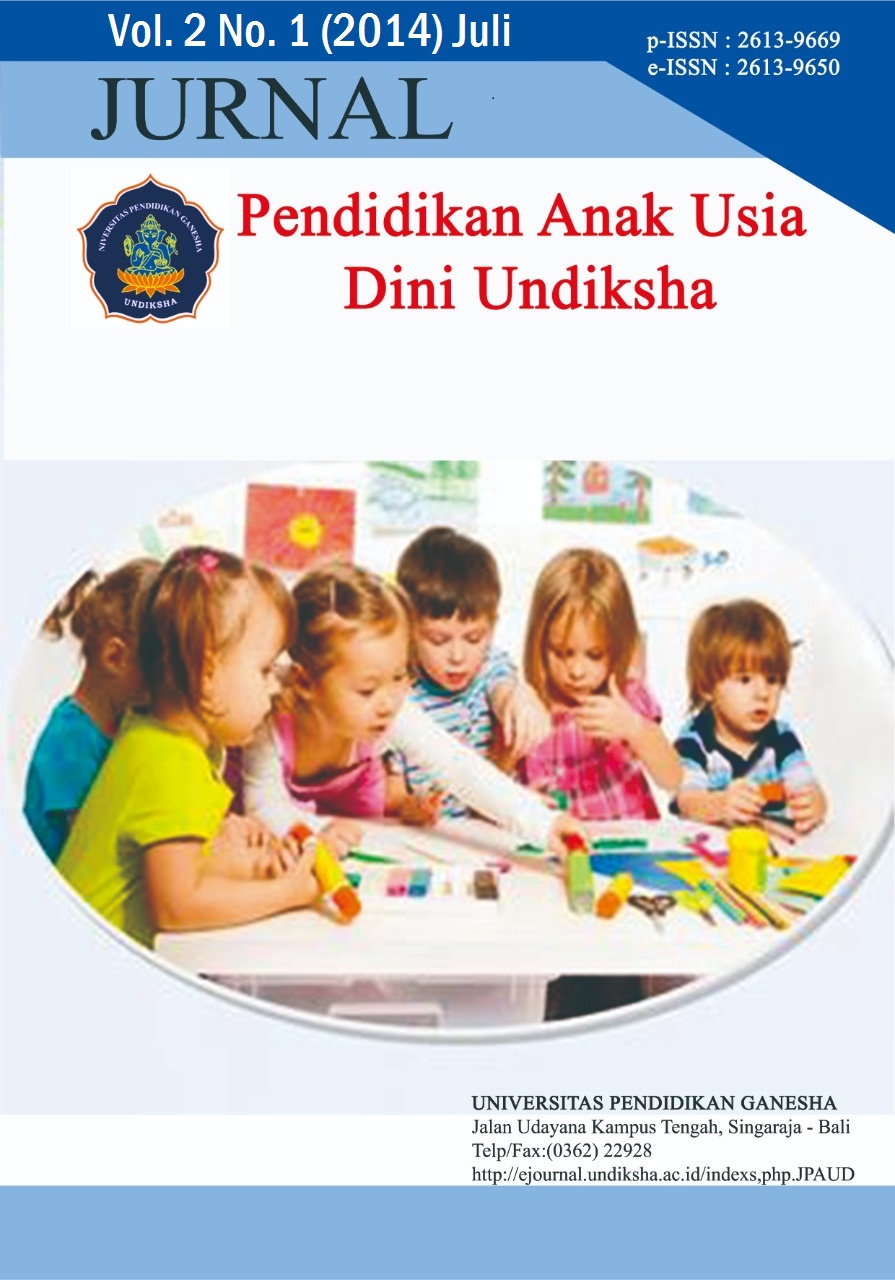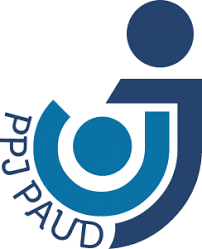PENERAPAN METODE PEMBERIAN TUGAS BERBANTUAN MEDIA GAMBAR DENGAN TEKNIK MOZAIK DARI BAHAN ALAM UNTUK MENINGKATKAN KEMAMPUAN MOTORIK HALUS ANAK USIA DINI
DOI:
https://doi.org/10.23887/paud.v2i1.3105Abstrak
Penelitian ini bertujuan untuk mengetahui peningkatan kemampuan motorik halus pada anak kelompok B1 semester II tahun pelajaran 2013/2014 di TK Trisula, Kecamatan Buleleng, Kabupaten Buleleng dengan menerapkan metode pemberian tugas berbantuan media gambar dengan teknik mozaik dari bahan alam. Jenis penelitian ini adalah penelitian tindakan kelas yang dilaksanakan dalam 2 siklus. Subjek penelitian adalah 13 orang pada anak kelompok B1 semester II tahun pelajaran 2013/2013 di TK Trisula. Data penelitian tentang kemampuan motorik halus dikumpulkan dengan metode observasi. Instrumen penelitian yang digunakan berupa lembar observasi. Data hasil penelitian dianalisis dengan menggunakan metode analisis statistik deskriptif dan metode analisis deskriptif kuantitatif. Hasil analisis data menunjukkan bahwa terjadi peningkatan kemampuan motorik halus anak dengan penerapan metode pemberian tugas berbantuan media gambar dengan teknik mozaik dari bahan alam pada siklus I sebesar 61,90% yang berada pada kriteria rendah dan mengalami peningkatan pada siklus II menjadi 88,45% tergolong pada kriteria tinggi. Peningkatan kemampuan motorik halus anak dari siklus I ke siklus II sebesar 26,55%.Kata Kunci : metode pemberian tugas, media gambar dengan teknik mozaik dari bahan alam, kemampuan motorik halus
The present study was aimed at improving second semester B1 students’ fine motoric ability on the academic years 2013/2014 at Trisula kindergarten in Buleleng district, Buleleng regency by implementing task giving method assisted with natural substances mosaic technique visual aids. This study was a classroom action research conducted in two cycles. There were 13 second semester B1 students’ fine motoric ability on the academic year 2013/2014 at Trisula kindergarten as the subject of the research. The data of students’ fine motoric ability was obtained by implementing an observation. The research instruments were observation sheets. The data was analyzed by using descriptive statistical analysis and quantitative analysis method.The result of the data analysis showed that the implementation of task giving method assisted with natural substances mosaic technique visual aids gave significant improvement to the students’ fine motoric ability, in which the first cycle which was 61.90% and categorized as low criteria improved into 88.45 % in the second cycle which was categorized as high criteria. Thus, the improvement from first cycle to the second cycle was 26.55%.
keyword : task giving method, natural substances mosaic technique visual aids, fine motoric ability
Diterbitkan
2014-06-26
Cara Mengutip
., N. W. N., ., D. N. W., & ., N. M. A. S. (2014). PENERAPAN METODE PEMBERIAN TUGAS BERBANTUAN MEDIA GAMBAR DENGAN TEKNIK MOZAIK DARI BAHAN ALAM UNTUK MENINGKATKAN KEMAMPUAN MOTORIK HALUS ANAK USIA DINI . Jurnal Pendidikan Anak Usia Dini Undiksha, 2(1). https://doi.org/10.23887/paud.v2i1.3105
Terbitan
Bagian
Articles
Lisensi
Authors who publish with the Jurnal Pendidikan Anak Usia Dini Undiksha agree to the following terms:
- Authors retain copyright and grant the journal the right of first publication with the work simultaneously licensed under a Creative Commons Attribution License (CC BY-SA 4.0) that allows others to share the work with an acknowledgment of the work's authorship and initial publication in this journal.
- Authors are able to enter into separate, additional contractual arrangements for the non-exclusive distribution of the journal's published version of the work (e.g., post it to an institutional repository or publish it in a book), with an acknowledgment of its initial publication in this journal.
- Authors are permitted and encouraged to post their work online (e.g., in institutional repositories or on their website) prior to and during the submission process, as it can lead to productive exchanges, as well as earlier and greater citation of published work. (See The Effect of Open Access)











